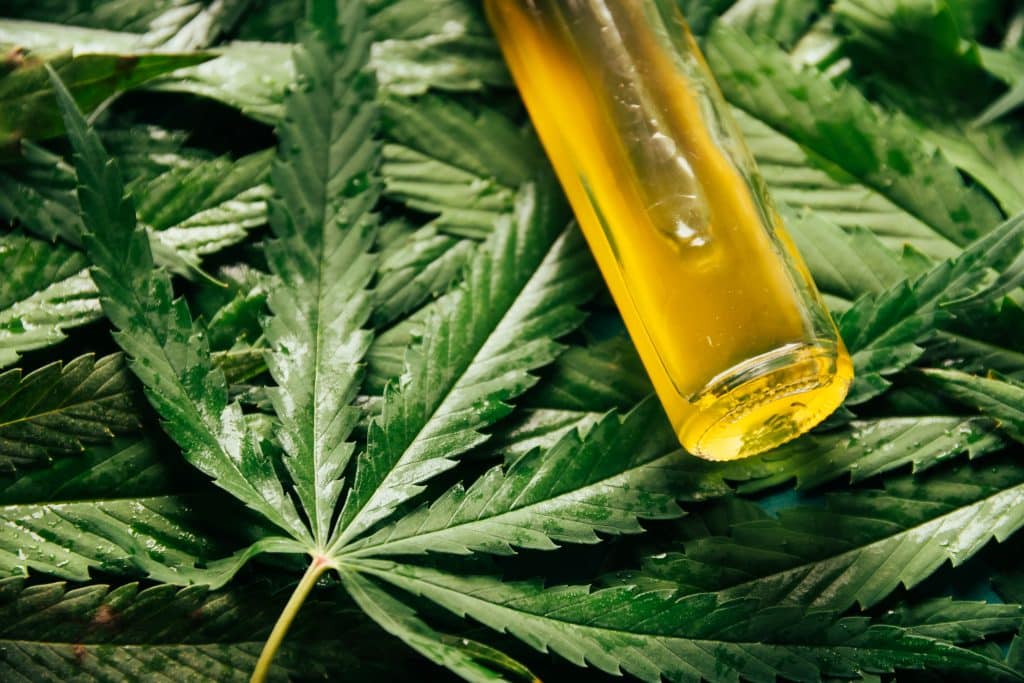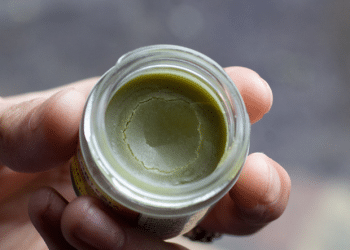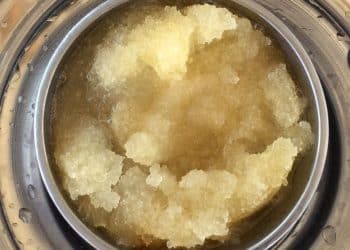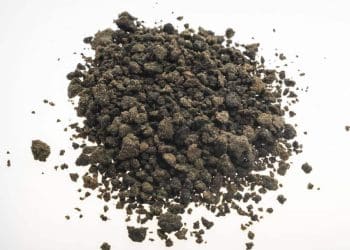In the evolving landscape of holistic wellness and natural remedies, consumers find themselves at a crossroads when choosing between cannabis-derived terpenes and their non-cannabis counterparts. This decision is not merely about preference but involves understanding the nuances that distinguish these compounds in terms of aroma, benefits, and applications. While both types of terpenes share common ground in their ability to influence mood and health, they originate from vastly different sources with unique characteristics. As individuals navigate this complex terrain, it becomes imperative to delve into the scientific underpinnings and practical implications of opting for one over the other. The journey through this comparison sheds light on how these natural essences contribute to the broader conversation around wellness and personal care.
Understanding Terpenes in Cannabis and Other Plants
Terpenes are vital compounds that contribute significantly to the aroma and flavour profiles of various plants, including cannabis. These molecules are not just about pleasant or pungent smells; they play a crucial role in plant defence mechanisms against predators such as insects and animals. Their importance extends beyond their natural function; consumers find them appealing for their distinctive aromas and potential therapeutic benefits.
Over 100 different terpenes have been identified in cannabis alone, showcasing the plant’s complex chemical makeup. Each terpene has a unique scent ranging from sweet and floral to earthy and musky. This diversity is not exclusive to cannabis; many other plants produce these aromatic compounds. For example, limonene, with its citrusy smell, is found both in cannabis and citrus fruits like oranges and lemons.
The variety of terpenes contributes to a wide range of smells among different strains of cannabis as well as between non-cannabis plants. Consumers often select products based on these aroma profiles, which can influence mood or provide relaxation. Besides adding fragrances, terpenes serve an essential function in protecting plants by deterring herbivores while attracting pollinators or beneficial predators that feed on common pests. Myrcene, for instance, produces a sedative effect on insects but offers therapeutic properties when used by humans.
Understanding the roles that various terpenes play helps consumers appreciate more than just the high associated with cannabis use—it opens up insights into how these compounds impact flavours, scents, and body effects across both cannabis-derived products and those derived from other botanical sources.
Cannabis Versus Non-Cannabis Terpenes
Cannabis-derived terpenes come directly from cannabis plants. These compounds are responsible for the distinct aromas and flavours of different cannabis strains. The extraction process is critical in preserving their purity and concentration. It involves careful methods that ensure the terpenes retain their natural essence without contamination.
Non-cannabis-derived terpenes, on the other hand, originate from various aromatic plants like lavender and pine. They share similar molecular structures with those found in cannabis but are extracted from a broader range of botanical sources. This diversity allows for a wide array of scents and flavours not limited to what cannabis alone can offer.
The extraction process plays a pivotal role in determining the final quality of both types of terpenes. Techniques such as steam distillation or CO2 extraction are commonly used to isolate these compounds while maintaining their integrity. However, it’s important to note that the method chosen can significantly affect their purity and concentration levels.
Consumers often face choices between products containing either type of terpene based on personal preference or desired effects. Some may opt for cannabis-derived terpenes due to their authenticity and direct link to specific cannabinoids found within certain strains. Others might prefer non-cannabis sources for their versatility and ability to mimic a broader spectrum of scents. Pros:
-
Authenticity, strain-specific profiles;
-
Broader scent variety and versatility.
Cons:
-
Limited by plant genetics;
-
May lack synergy with cannabinoids.
Understanding these differences is crucial for consumers looking into products like recreational marijuana or therapeutic essential oils where terpene content plays a significant role in effectiveness. By comparing botanical terpenes sourced from outside cannabis against those extracted directly from it, we gain insight into how each contributes uniquely to flavor profiles and potential therapeutic benefits across various applications. Choosing between them depends largely on individual needs or preferences towards aroma complexity versus cannabinoid compatibility.

Effects and Uses of Terpenes in Wellness
Terpenes, both from cannabis and non-cannabis sources, play a significant role in wellness. They are known for their distinct scents and flavours. More importantly, they have effects that can influence health and well-being. Some terpenes are associated with relaxing or energizing effects. This makes them valuable in managing stress and enhancing mood.
Consumers find these compounds particularly useful in aromatherapy. Aromatherapy uses essential oils to improve physical and emotional health. Essential oils rich in terpenes can help create a calming environment or boost energy levels depending on their type. For example, linalool, found in lavender, is celebrated for its relaxation properties. Meanwhile, limonene from citrus fruits is sought after for its uplifting effect.
Research also points to the potential anti-inflammatory and analgesic benefits of some terpenes. These properties could offer relief from pain and inflammation without the side effects associated with conventional medications. The therapeutic applications of these compounds extend beyond simple relaxation or mood enhancement.
They might contribute to longer-term health benefits by reducing inflammation-related diseases or chronic pain conditions. Understanding the source of terpenes—whether cannabis-derived or not—is crucial for consumers aiming to incorporate them into their wellness routines effectively.
The Entourage Effect Explained
The entourage effect is a theory suggesting that terpenes, when combined with cannabinoids, can enhance the therapeutic benefits of cannabis products. This concept has sparked interest among consumers looking to maximize the health advantages of their cannabis consumption. Terpenes are not unique to cannabis; they exist in many plants and contribute to their flavour, scent, and colour. However, in the context of cannabis versus non-cannabis terpenes, this synergy becomes particularly significant.
Research indicates that terpenes might work together with cannabinoids like THC and CBD to improve pain relief, mood regulation, and inflammation reduction. For example, myrcene is known for its sedative effects and may help increase THC’s potency. Similarly, limonene might boost mood elevation properties when combined with certain cannabinoids. These interactions suggest that the entourage effect could tailor the therapeutic outcomes for individuals seeking specific benefits from their cannabis products.
However, it’s important to note that not all scientists agree on how impactful the entourage effect is. Skeptics argue there’s insufficient evidence proving that this interaction significantly alters or enhances the effects of cannabinoids alone. They call for more rigorous studies to validate these claims conclusively.
Ongoing research aims to shed light on how exactly terpenes interact with cannabinoids and whether these interactions hold as much potential as some believe. Scientists are exploring various combinations of these compounds in clinical trials to understand better their effects on human health and wellness. Pros:
-
May enhance therapeutic outcomes;
-
Tailors experiences based on individual needs;
-
Increases understanding of plant-based medicine.
-
Cons:
-
Lack of consensus among scientists;
-
Requires more empirical evidence.
Despite differing opinions regarding its impact level,** demand** for knowledge about the entourage effect continues to grow among consumers who value personalized approaches towards wellness through natural solutions such as essential oils derived from both cannabis-specific or general botanical sources.
Legal and Regulatory Aspects of Terpenes
Regulations on terpenes vary widely across regions, significantly impacting their legality. This variance affects both consumers and businesses dealing with terpenes derived from cannabis as well as those from non-cannabis sources. In many countries, cannabis-derived terpenes are subject to stricter regulations compared to their non-cannabis counterparts. This is largely due to the legal status of cannabis itself which varies from one jurisdiction to another.
For instance, in some areas, possessing or selling cannabis-derived compounds could lead to severe legal consequences. On the other hand, non-cannabis-derived terpenes, often extracted from plants like lavender or citrus fruits, generally face fewer regulatory hurdles. They are more widely accepted for use in various products ranging from perfumes to food additives.
Compliance with local laws is essential for companies operating within the terpene market. Those who fail to adhere may face penalties, including fines or business closure. It’s crucial for businesses involved in the production or sale of these compounds to stay informed about local regulations and adjust their operations accordingly. Business owners must research extensively into markets where they plan to operate or sell their products. Understanding both national and international laws related to cannabis and its derivatives helps ensure compliance across borders.
The process of navigating through these legal landscapes requires thorough planning and consultation with legal experts specializing in this field. For businesses looking at expanding internationally, understanding differences between countries regarding cannabis regulation becomes even more critical.
Moreover, quality control plays a significant role in ensuring compliance with regulations concerning terpene properties and safety standards set by authorities. For example:
-
Ensuring that all products meet purity requirements;
-
Verifying that extraction processes do not introduce harmful contaminants.
These measures help safeguard consumer health while also protecting companies against potential legal issues.
Consumer Considerations for Choosing Terpenes
When selecting terpenes, purity and source stand out as critical factors. High-quality terpenes should be pure, meaning they are free from contaminants that could affect their effectiveness or safety. The source of terpenes also plays a significant role in determining their quality. Cannabis-derived terpenes often come with the assurance of being natural but may carry legal implications depending on the region’s cannabis laws. Non-cannabis-derived terpenes offer an alternative that bypasses these legal hurdles, yet consumers might question their authenticity in replicating specific flavours or effects.
Consumers must consider potential allergies or sensitivities to certain terpenes. Just like any other product derived from plants, individuals can react differently to various compounds. Knowing one’s sensitivities can guide consumers toward choosing products that won’t trigger adverse reactions. This awareness is crucial for ensuring a positive experience with terpene-based products. Price variation is another key consideration for consumers exploring terpene options. Generally, the cost of these products varies widely based on type and quality:
-
Cannabis-derived terpenes tend to be pricier due to their extraction process and the regulatory landscape surrounding cannabis;
-
Synthetic or non-cannabis plant-derived alternatives might offer a more affordable price point but could differ in terms of flavor complexity and perceived benefits.
This range offers options for different budgets but underscores the importance of researching before making a purchase decision.
Trends and Innovations in Terpene Use
The landscape of terpene use is rapidly evolving, driven by a growing interest among consumers to customize their cannabis experiences. They are increasingly seeking out products with specific terpene profiles. This demand has led to innovations in how terpenes are used, not just in cannabis products but across various industries.
Consumers now have the option to choose cannabis products that have been tailored for relaxation, energy, or therapeutic benefits based on their terpene compositions. For example, a product with a high concentration of myrcene is sought after for its relaxing properties. On the other hand, limonene-rich products are favored for their uplifting effects. The ability to select products based on desired outcomes marks a significant shift towards more personalized consumption experiences.
Moreover, there’s a rising trend in the development of non-cannabis products infused with cannabis-derived terpenes. These include essential oils, aromatherapy diffusers, and even culinary ingredients that aim to offer some of the sensory and potential health benefits associated with these compounds without containing THC or CBD. This approach broadens the appeal of terpenes beyond traditional cannabis consumers to those interested in natural wellness options.
Technological advancements play a crucial role in this evolving landscape. Improved methods for extracting and preserving terpenes ensure that they retain their aromatic potency and therapeutic qualities from plant to product. Techniques such as steam distillation and CO2 extraction are becoming more refined, allowing producers to capture precise terpene profiles efficiently. Preservation technology also sees continuous improvement; innovations like microencapsulation help maintain the integrity of terpenes until they’re released during use—be it when lighting up cannabis flowers or applying an infused topical cream—ensuring maximum efficacy and experience quality.
Buying Terpenes Online: Legality and Expectations
Before delving into the online purchase of terpenes, consumers must first navigate the complex landscape of legality. The legal status of cannabis-related products varies widely across regions. This means that buyers should diligently verify local laws before making a decision to purchase terpenes online. Particularly with cannabis versus non-cannabis terpenes, understanding these distinctions is crucial as they can significantly impact what is permissible within one’s jurisdiction.
Moreover, quality assurance stands as a pivotal concern for consumers seeking to buy terpenes online. With the market flooded by numerous suppliers, distinguishing between high-quality and subpar products becomes essential. Consumers are advised to look for third-party testing certifications when considering their options. These certifications serve as an unbiased confirmation of the product’s purity and composition, ensuring that buyers receive exactly what is advertised.
In addition to verifying legality and quality assurance measures, potential buyers should also acquaint themselves with shipping restrictions and return policies associated with online purchases of terpenes. Some regions may impose strict regulations on the shipment of cannabis-derived substances, including certain types of terpenes. Therefore, understanding these limitations beforehand can prevent any unwelcome surprises during delivery.
Final Remarks
The exploration of cannabis versus non-cannabis terpenes reveals a nuanced landscape where both sources offer unique benefits and considerations. Consumers should weigh the effects, legal aspects, and wellness applications of terpenes, informed by the entourage effect and current trends in terpene use. The choice between cannabis-derived and non-cannabis-derived terpenes hinges on individual preferences, regulatory frameworks, and desired outcomes in wellness or therapeutic contexts. As the market for terpenes evolves, consumers are encouraged to stay informed about innovations and legal changes that impact access and use of these compounds. Making educated decisions requires understanding the complex interplay between the source of terpenes, their effects, and the regulatory environment.












